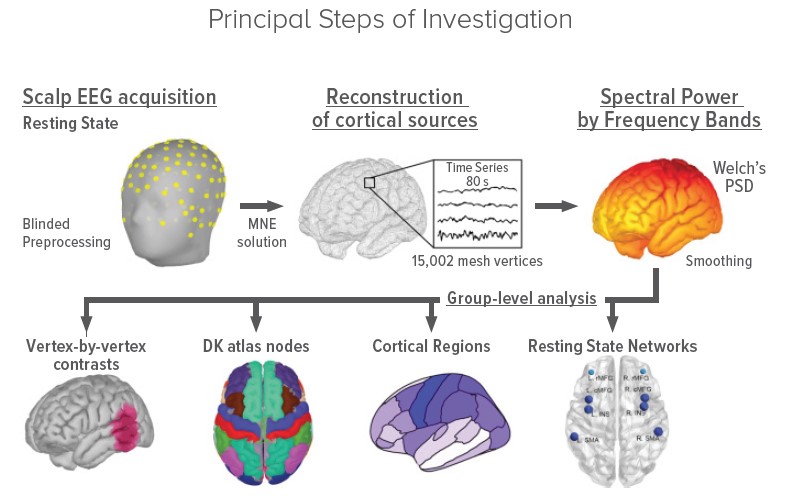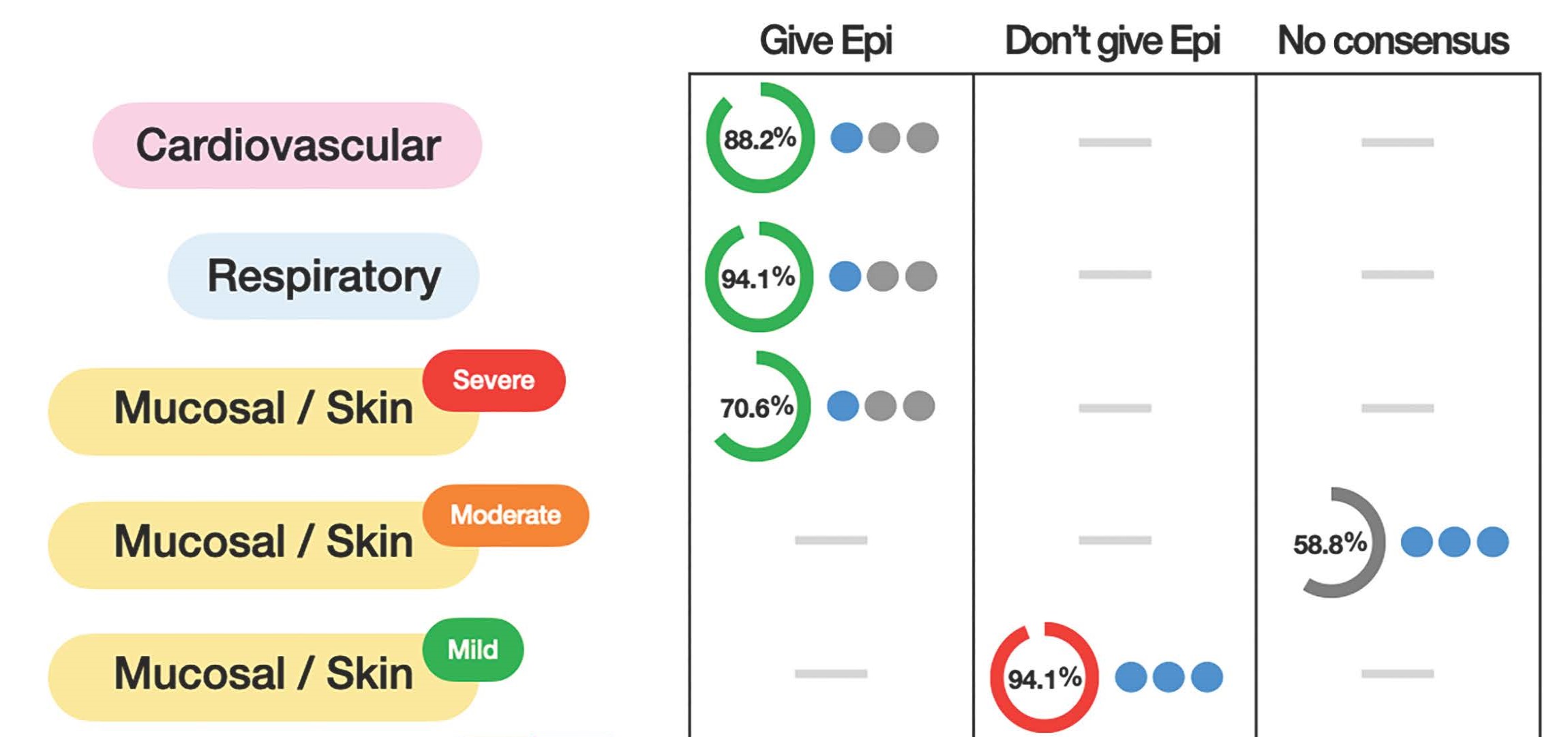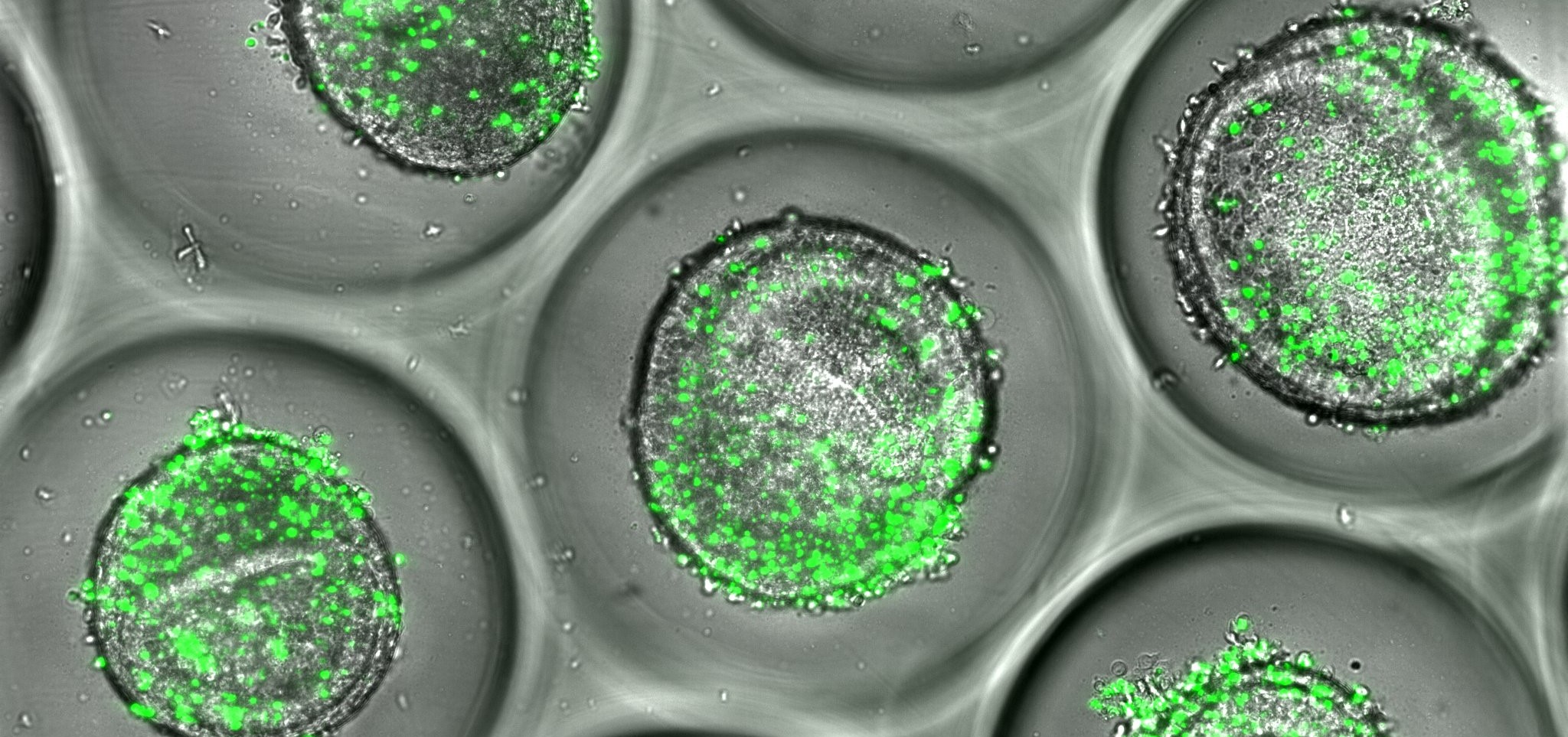Exploring How Thalamocortical Modulation Impacts Brain Function in Fragile X Syndrome
Research By: Ernest Pedapati, MD, MS | Craig Erickson, MD
Post Date: May 11, 2022 | Publish Date: May 11, 2022
Child and Adolescent Psychiatry | Top Scientific Achievement


Disrupted thalamocortical modulation appears to play a key role in local hyperexcitability in Fragile X Syndrome (FXS). Researchers at Cincinnati Children’s say these new findings will further the understanding of fundamental disease mechanisms in FXS and open the door to future therapeutic and physiological investigations.
A team led by Ernest Pedapati, MD, MS, and leading FXS expert Craig Erickson, MD, translated findings from well-established knockout animal models into patients to identify tractable treatment targets. Through source modeling of resting-state electroencephalography (EEG) data, the team noted:
- Increases in localized gamma activity
- Pervasive changes of theta/alpha activity, indicative of disrupted thalamocortical modulation coupled with elevated gamma power
- Stepwise moderation of low- and high-frequency abnormalities based on female sex
- Relationship of this physiology to intellectual disability and neuropsychiatric symptoms
Changes in thalamocortical activity are a system-level hypothesis that could explain these EEG findings. These changes, also known as thalamocortical dysrhythmia (TCD), are underexplored in FXS.
TCD, an electrophysiological model, shows how intrinsic changes in the thalamocortical system form the basis of disease-related pathophysiology. It is used to characterize dysregulation of cortical excitability in other neuropsychiatric conditions such as epilepsy and Parkinson’s disease.
“The changes may contribute to and maintain abnormal cortical states that reduce functional brain connectivity and regional function necessary for optimal brain functions,” says Erickson.
More 2023 Research Highlights
Chosen by the Division of Child and Adolescent Psychiatry
Barzman D, Hemphill R, Appel K, et al. A Large Naturalistic Study on the BRACHA: Confirmation of the Predictive Validity. Psychiatr Q. 2022;93(3):803-811. doi:10.1007/s11126-022-09993-4
Sorter M, Stark LJ, Glauser T, et al. Addressing the Pediatric Mental Health Crisis: Moving from a Reactive to a Proactive System of Care. J Pediatr. Published online May 13, 2023. doi:10.1016/j.jpeds.2023.113479
Erickson CA, Tessier CR, Gross C, et al. Lymphocytic Extracellular Signal-Regulated Kinase Dysregulation in Autism Spectrum Disorder. J Am Acad Child Adolesc Psychiatry. 2023;62(5):582-592.e2. doi:10.1016/j.jaac.2022.09.437
Boggs AE, Schmitt LM, McLane RD, et al. Optimization, validation and initial clinical implications of a Luminex-based immunoassay for the quantification of Fragile X Protein from dried blood spots. Sci Rep. 2022;12(1):5617. Published 2022 Apr 4. doi:10.1038/s41598-022-09633-8
View more discoveries from 50 research divisions and areas
Return to the 2023 Research Annual Report main features
| Original title: | Neocortical localization and thalamocortical modulation of neuronal hyperexcitability contribute to Fragile X Syndrome |
| Published in: | Communications Biology |
| Publish date: | May 11, 2022 |
Research By









